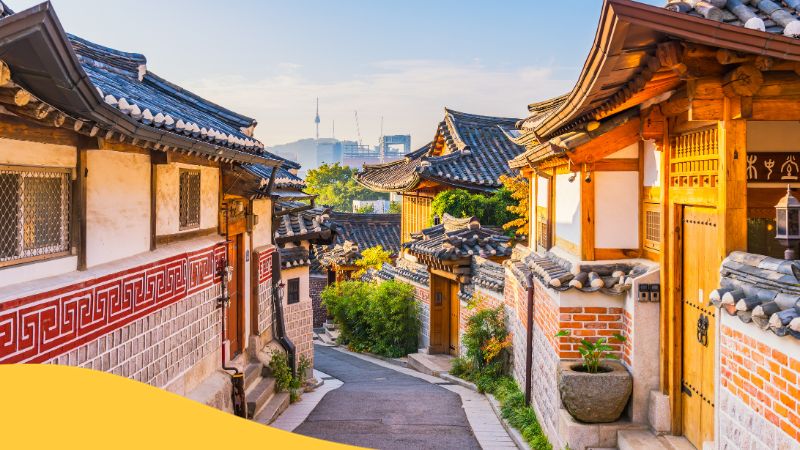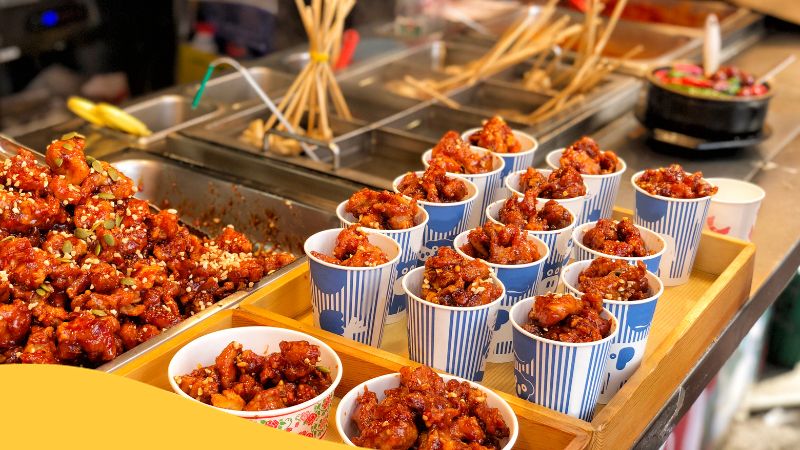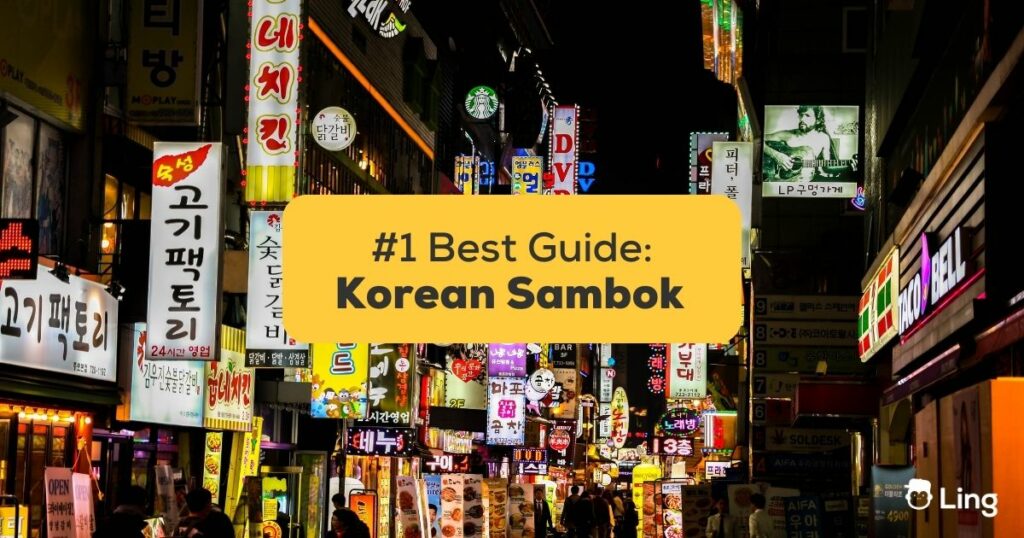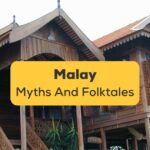You know that feeling when summer’s heat gets just a bit too much? That yearning for a cool breeze or a splash of water to refresh you? Now, imagine an entire nation turning this universal sentiment into a tradition. Here’s where Korean Sambok shines. This isn’t about mere days on a calendar but how South Korea has woven history, tradition, and culinary delight into the hottest days of the year. Picture it: a rich tapestry that turns the trials of summer into an event of rejuvenation. Intrigued? Let’s dive deeper into this sun-soaked ritual!
What Is 삼복 Or Korean Sambok?
Sambok, often termed the “Three Dog Days,” is an integral tradition in South Korea that marks three specific days during the summer season. Derived from the Korean words “sam” meaning three, and “bok” denoting the peak days, Sambok is a practice aimed at overcoming the summer’s oppressive heat and ensuring overall well-being.
These three days, identified based on the lunar calendar, are:
- 초복 or Chobok: The beginning day of the Sambok period around the second week of July.
- 중복 or Jungbok: The middle and considered the hottest day around the last week of July.
- 말복 or Malbok: The final day, marking the end of this observance. It usually happens 10 days after the Jungbok.
Each of these days holds a unique significance, with various customs, foods, and practices associated with them. Apart from food, other traditional activities include visiting temples and partaking in ancestral rites.

What Do Koreans Do During Sambok?
While it might sound like a mere calendar entry, trust us, these special days are much more than that. With a flavor of history, a sprinkle of tradition, and a dash of community spirit, Sambok is Korea’s answer to the summer holidays. Dive in to find out how Koreans add a bit of pizzazz to these sweltering days.
A Moment Of Zen: The Jogyesa Temple In Seoul
Picture this: nestled amidst the hustle and bustle of modern-day Seoul is the Jogyesa Temple. During Sambok, its visitor count goes off the charts. Between the glow of lanterns and the shade of ancient trees, folks light candles, whisper prayers, and indulge in a bit of soul-searching meditation. It’s a slice of serenity in the heart of urban chaos.
Party With The Ancestors: Charye Time
Charye isn’t just your average family dinner. It’s a moment where families bond over elaborate feasts, paying homage to their ancestors. Think of it as a cosmic conference call, with fresh fruits, traditional dishes, and wine on speed dial!
Nature’s Call At Bukhansan National Park
To beat the heat, where do you think Koreans go? The Bukhansan National Park becomes the summer hotspot (or should we say, cool spot?) offering refreshing trails, cascading waterfalls, and breathtaking views of Seoul. It’s the ultimate Sambok getaway.
Getting Herbal With Hanyak
Now, Sambok isn’t just about relaxation and fun. Enter Hanyak – Korea’s age-old answer to wellness. Around this time, folks queue up at herbal clinics, where they get bespoke concoctions made of roots, herbs, and all things natural. It’s nature’s way of saying, “I’ve got your back this summer.”
Snoozing Through Sambok: Siesta, Korean Style
Did you think siestas were strictly Spanish? Think again! During Sambok, Koreans have given the nap game a twist. With “nap cafes” popping up like mushrooms in monsoons, city folks can sneak in an afternoon snooze or unwind with a book.
A Cultural Cocktail: The Bonghwa Eun-Uh Festival
And then, when the evening rolls around, towns and cities burst into cultural euphoria. Take the Bonghwa Eun-Uh Festival, for instance. Traditional fishing, classic folk games, and riveting performances make it a celebration of all things Korea.

Traditional Sambok Food
When we talk about Sambok, the association with food is undeniable. The traditional foods consumed during this period are not just about satiating hunger but are also deeply rooted in the belief of replenishing energy, maintaining good health, and preparing the body to withstand the seasonal extremities. Here’s a closer look at the traditional foods associated with Sambok:
Bosintang (Dog Meat Soup)
Once upon a time, Bosintang, or dog meat soup, was the talk of the Sambok town. It wasn’t just a dish, but a summer elixir, believed to fend off the searing heat. But like all stories, this one has evolved too. Today’s Korea sings a different tune. With the winds of change, dogs have transitioned from the pot to the couch, becoming cherished pets. As a testament to Korea’s adaptability, the once-popular dish is now a rare sight, with many Koreans championing animal rights and advocating against its consumption.
Samgyetang
While Bosintang’s star might have dimmed, Samgyetang has emerged as Sambok’s culinary superstar. Imagine a bowl of glistening broth with a tender chicken stuffed with glutinous rice, garlic, jujube, and the pièce de résistance, ginseng. It’s not just a meal but a potion of vitality, embodying the spirit of Sambok in every sip. Across Korea, as the summer heat swells, bowls of Samgyetang offer solace and sustenance.
Sambok’s Smorgasbord
Let’s not put all our eggs (or chickens) in one basket. Sambok’s culinary canvas is rich and varied. From energizing eel dishes to robust black goat preparations and wholesome beans, the season is a celebration of foods that are both delicious and nutritious. These culinary delights, brimming with vitamins and minerals, are Korea’s secret weapons against the rigors of summer.
Common Words Related To Korean Sambok
When diving into the world of Sambok, it’s enlightening to be familiar with some key terms that encapsulate the essence of this tradition. Understanding these terms not only enhances one’s appreciation of Sambok but also serves as a gateway to the rich linguistic tapestry of the Korean language. Below is a table that presents some commonly used words related to Sambok, accompanied by their Korean script and pronunciation.
| English | Korean Script | Pronunciation |
|---|---|---|
| Nutrient | 영양소 | Yeong-yang-so |
| Health | 건강 | Geon-gang |
| Temple | 사찰 | Sa-chal |
| Ancestral Rites | 차례 | Cha-rye |
| Mountain | 산 | San |
| Herbal Medicine | 한약 | Han-yak |
| Meditation | 명상 | Myeong-sang |
| Prayer | 기도 | Gi-do |
| Festival | 축제 | Chuk-je |
| Ancestor | 조상 | Jo-sang |
| Nature | 자연 | Ja-yeon |
| Refreshment | 상쾌 | Sang-kwae |
| Resilience | 회복력 | Hwe-bok-ryeok |
| Retreat | 피신 | Pi-sin |
Learn Korean With Ling
At the heart of it, Sambok is so much more than just a period on Korea’s calendar; it’s a vibrant dance of flavors, traditions, and stories waiting to be explored. Each dish, each custom, is an invitation to dive deeper into the tapestry of Korean culture. And if this culinary journey has ignited a spark of curiosity, imagine understanding the tales behind every bowl and ritual.
Ready for the next step? Dive headfirst into the Korean language itself. To truly immerse yourself, download the Ling app from the App Store or Play Store. It’s more than just an app; it’s your gateway to a whole new world. Happy learning!


































































